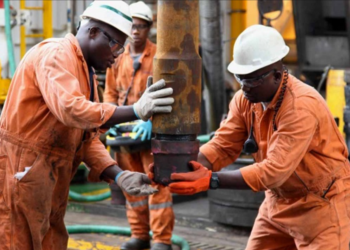The Bayelsa State Government Technical Committee on the November 5 oil spill at Oil Mining Lease (OML) 29 in Nembe has provided reasons why it disagrees with the reports of the regulatory agencies on the incident.
The regulatory agencies, the National Oil Spills Detection and Response Agency (NOSDRA) and the Nigerian Upstream Petroleum Regulatory Commission (NUPRC), had said the oil spill was caused by human sabotage.
The Bayelsa Technical Committee in dismissing the reports disagreed with the procedures adopted in arriving at such conclusions.
This was made known by the Chairman of the Bayelsa State Technical Committee, Mr Biriyai Dambo, on Sunday, in which he said that the divergent views held by the parties could not be resolved and as such rendered the Joint Investigative Visit (JIV) inconclusive.
Dambo, who is also the Attorney-General and Commissioner for Justice in Bayelsa, insisted that the oil spill was caused by equipment failure, accused the regulators of bias and colluding with Aiteo against the interest of the people of Bayelsa and the Niger Delta.
What the Chairman of the Bayelsa State Technical Committee on the oil spill is saying
According to NAN, Dambo pointed out that the components and accessories of the wellhead that were to be inspected had been removed and replaced, which amounted to tampering with and concealing the equipment and evidence.
He noted the existence of similar oil spill incidents, although of lesser magnitude, from the same Santa Barbara Wellhead 1 in OML 29 in 2018 and 2019, which Aiteo had previously admitted.
Dambo, however, expressed regrets that no remediation nor safeguards against future recurrence had been put in place or enforced by Aiteo and NOSDRA respectively over the said spills till this moment.
He said requests for remediation of the earlier spills by the affected communities were rebuffed, until this major blowout happened in November.
The statement from Dambo partly reads, “We were shocked to note that on the day of this latest JIV, when asked about these previous incidents at the exact same wellhead, AITEO denied and NOSDRA kept silent.
“During the course of the JIV, the behaviour and utterances of representatives of NOSDRA and NUPRC called into question their independence and neutrality.
“We are convinced that NOSDRA and NUPRC are biased and are playing a script in cahoot with AITEO. We have very convincing evidence which we will bring to light at the appropriate time and through the appropriate fora that NOSDRA and NUPRC are completely biased.
“They have taken a premeditated position in favour of Aiteo against the interest of the people of Bayelsa State and the Niger Delta.
“This is terribly sad and unfortunate given the fact that NOSDRA and NUPRC are supposed to be regulators and as such should be unbiased and act at all times with integrity. Finally, the Government of Bayelsa State completely rejects the JIV of Wednesday, December 22, 2021.’’
Going further, he said that the Bayelsa State Government would take all appropriate steps to pursue environmental justice for itself and the affected communities, explaining that such redress would put an end to the perennial pollution of the environment through reckless and irresponsible oilfield practice that is condoned by a weak or compromised regulatory system.
What you should know
Recall that Aiteo Eastern Exploration and Production Company on November 5, reported a major leakage from its Oil Mining Lease (OML) 29, in Nembe, Bayelsa.
Aiteo acquired the Oil Mining Lease (OML) 29 following the 2015 divestment by Shell. The well was acquired for $2.4 billion and consists of the 97km Nembe Creek trunk line which evacuates crude from onshore oil wells within the oil bloc and other operators to Bonny Export Terminal.
Aiteo had earlier claimed that the oil spillage was caused by sabotage even before the JIV was conducted.
The JIV is a statutory probe that follows every reported leak incident to unravel the cause and volume of crude discharged into the environment.
The JIV is usually convened by the operator of the leak facility and it comprises representatives of the oil firm, affected communities, regulators and the state Ministry of Environment.

















